Yamagata
Winter sports, hot springs, Snow Monster hoar frosts & all manner of winter fun in Zao, Yamadera temple rising on majestic rocky outcrops, the sacred Three Mountains of Dewa, and a variety of Onsens from nostalgically popular Ginzan Onsen to hidden gems
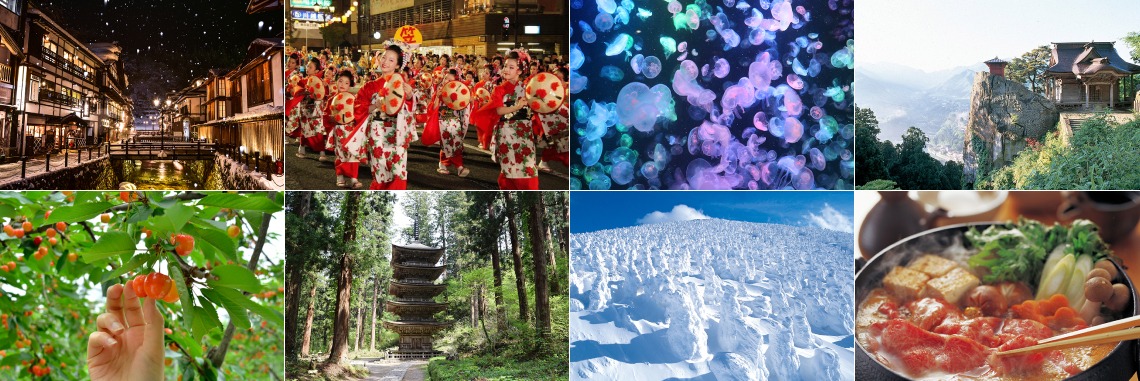
Yamagata’s beautiful natural wonders
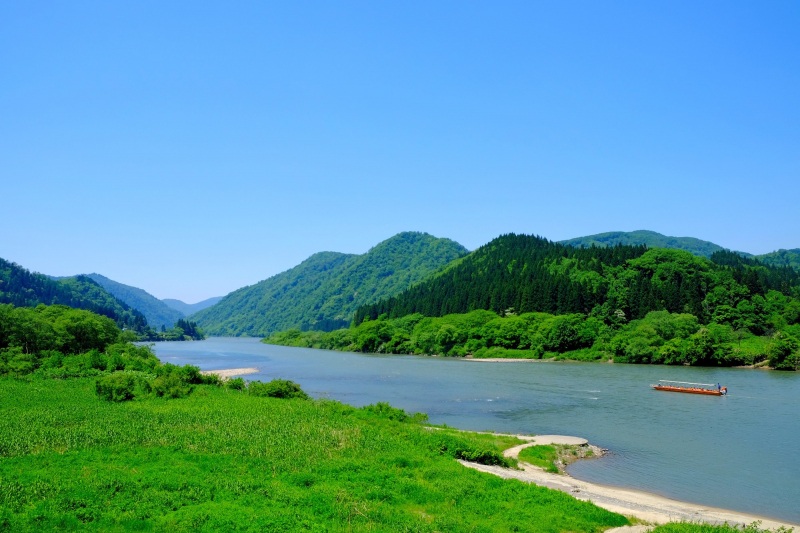
Mogami River
Mogami River is famous throughout Japan for its appearance in the poem “Samidare wo/atsumete hayashi/Mogamigawa” by the great Haiku master Basho Matsuo. Basho composed this lively poem during a boat journey down the rapids, portraying the rapid flow of the Mogami River following the long seasonal rains. The Mogami River is one of Japan’s three fastest-flowing rivers however the popular boat tours are leisurely cruises while going through some rapids.
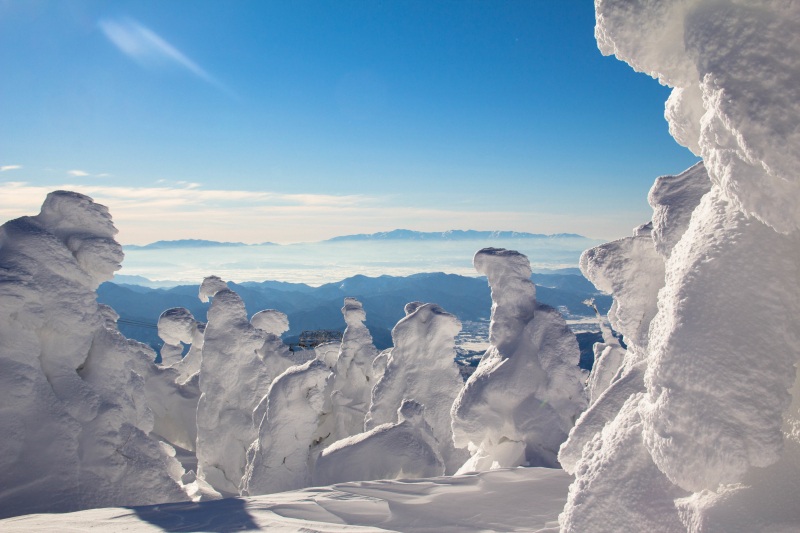
Frost Covered Trees of Zao
These frost covered trees can only be found in specific regions and are unique in all of Japan. The unique phenomenon is caused by heavy winter storms splashing icy spray onto the trees which then immediately freezes. The layers of frost thicken forming a group of gigantic frost covered trees colloquially known as “snow monsters” due to their fluffy appearance. The unique view is said to be a divine creation and can be enjoyed via cable car and snowplough.
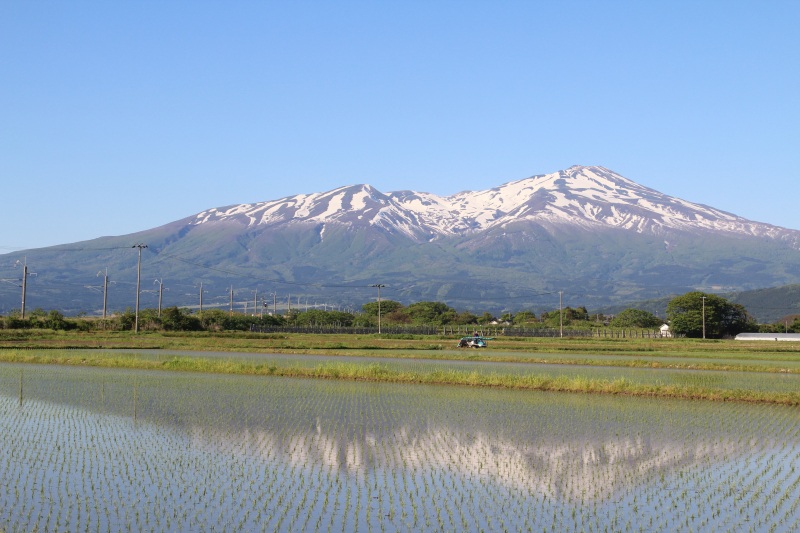
Mt. Chokai
Facing the Japan Sea, the unique topography of Mount Chokai rises dramatically from sea level to a height of 2,236 metres. The mountain is recognised as one of Japan’s 100 most famous mountains. Thanks to its majestic appearance the mountain is known as “Dewa Fuji” (the Mount Fuji of Dewa), and locals love the grace of the snow-capped mountain. The uninterrupted panoramic view from the top of this isolated mountain peak is spectacular.
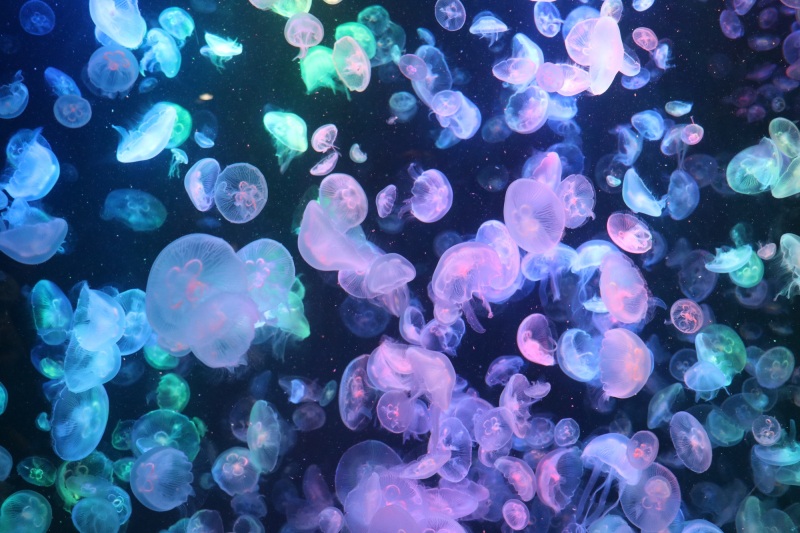
Kamo Aquarium
Tsuruoka City Kamo Aquarium is located in an impressive modern white-walled building on the coast and is home to the world’s largest collection of jellyfish. The aquarium has been awarded a Guinness World Record for its display of over 50 varieties of jellyfish. The mesmerising swaying of the translucent creatures in the water is magical. While the colourfully illuminated jellyfish in the deep blue-water tank gives visitors the impression of being in a fairyland.
Yamagata’s history, culture and festivals
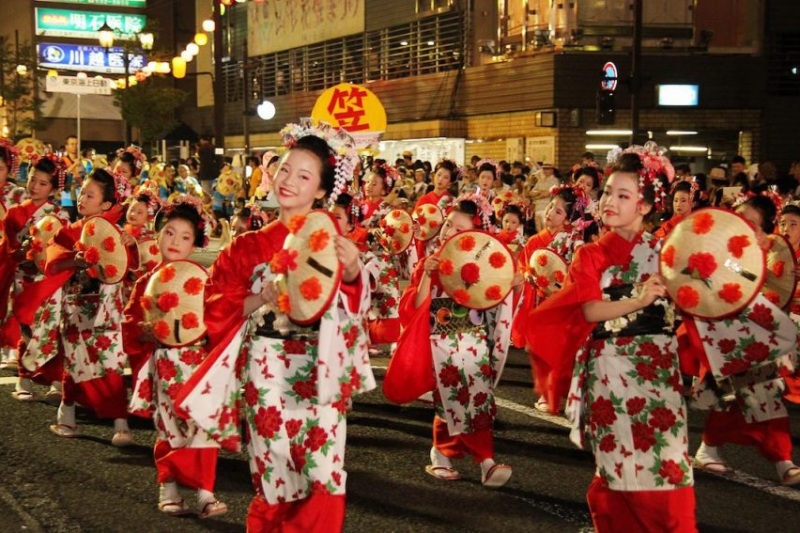
Yamagata Hanagasa Festival
The Yamagata Hanagasa Festival takes place annually from 5 to 7 August. With the heroic rhythms of Taiko drumming and shouts of “Yassho Makasho!”, over 10,000 dancers parade through the streets of central Yamagata. Hanagasa means “straw hat” and the dancers carry straw hats decorated with vibrant red flowers. The view of a multitude of dancers in Kimonos swaying with bright flowered hats in hand is stirring!
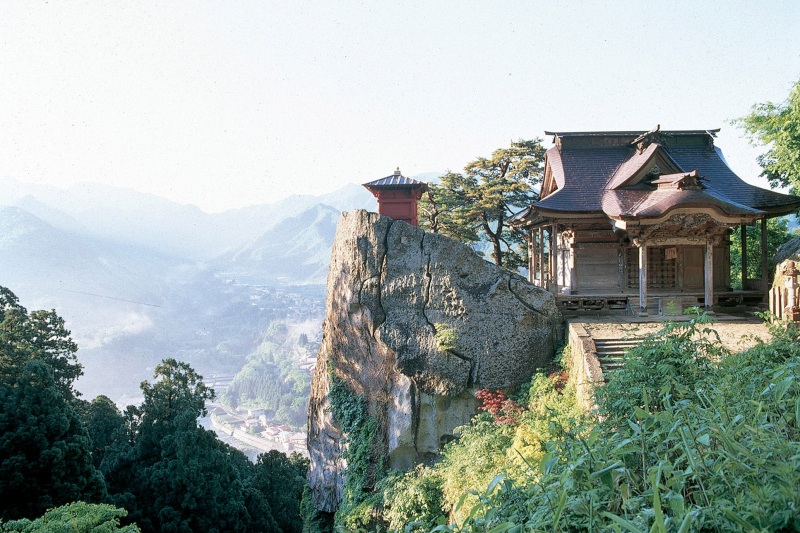
Risshaku-ji Temple
Risshaku-ji Temple is popularly known as Yamadera (Mountain Temple). The rocky mountain itself is a sacred location for ascetic Zen practices. Visitors can enjoy breath-taking views along the one-hour path from the foot of the mountain to Okunoin Temple and Daibutsuden Hall at the top. The great Haiku master Basho Matsuo composed one of his best-known Haiku poems “Shizukesa ya/iwa ni shimiiru/semi no koe” in the work “Oku no Hosomichi” (Narrow Road to the Deep North) while walking this path.
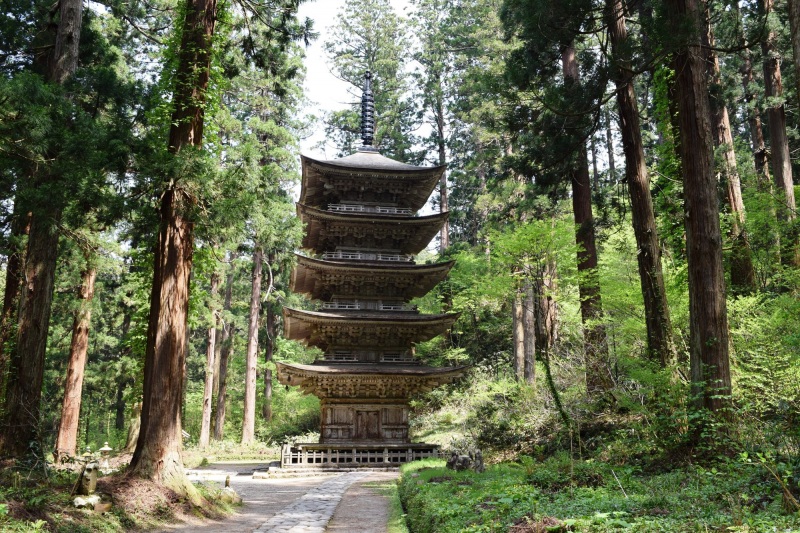
Mt. Haguro
Mount Haguro, Mount Gassan and Mount Yudono, known as the Three Mountains of Dewa, have been revered as sacred mountains for hundreds of years. Travelling to these three mountains is said to be a journey of reincarnation as believers pray for the present on Mount Haguro, for the past on Mount Gassan and for the future on Mount Yudono. The 1.7-kilometre walking route of Mount Haguro takes one hour from Zuishinmon Gate to Sanjingosaiden Shrine.
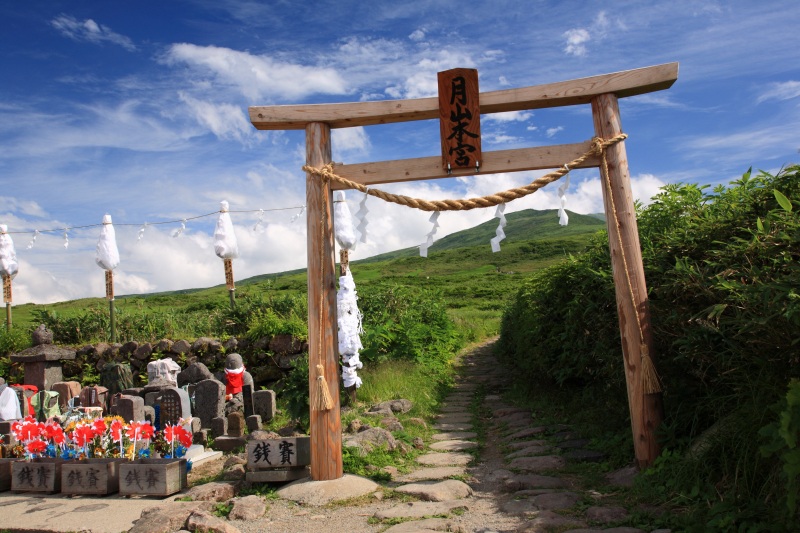
Mt. Gassan
The main peak of the Three Mountains of Dewa, Mount Gassan worships Tsukiyomi-no-Mikoto, a moon god presiding over reincarnation from the other world.
Having been worshipped as a sacred mountain for many years, Mount Gassan is a popular destination for pilgrims who come wearing white. Please note that photography is not allowed in Gassan Shrine at the top of the mountain. Visitors need to receive the chief priest’s purification service before visiting the main shrine building. Once at the shrine reflect on your previous life and pray for an easy and peaceful transition to the future at this shrine ruling over reincarnation!
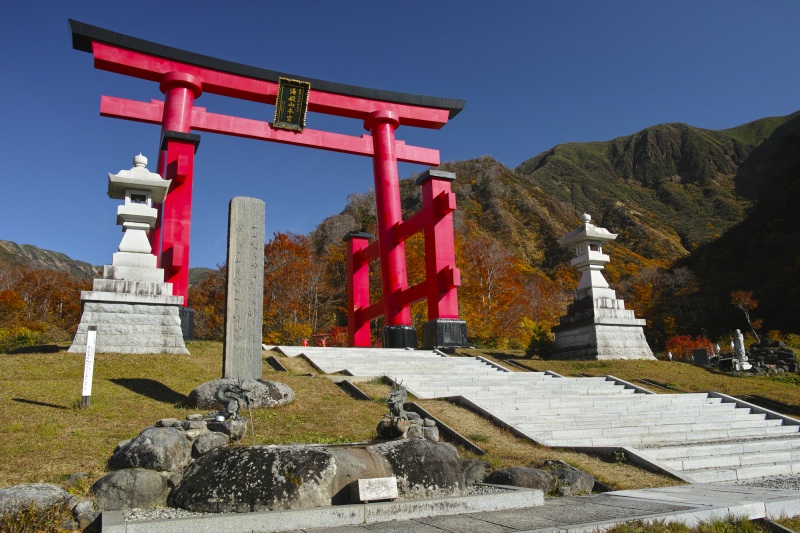
Yudonosan Shrine
Mount Yudono is the final destination of the pilgrimage where mountain priests come for ascetic Zen practices after performing austere rituals in Mount Gassan and Mount Haguro. As a particularly sacred location there are a number of regulations visitors must observe when visiting Yudonosan Shrine. Photography is not allowed and in order to preserve the shrine’s mystery visitors are prohibited from talking about what they see and hear inside its precincts. The wearing of shoes is not allowed on the shrine’s grounds as the area is regarded as a sacred place separate from the outside world. The barefoot walk along the approach to the shrine gives visitors a feel for the earth’s energy.
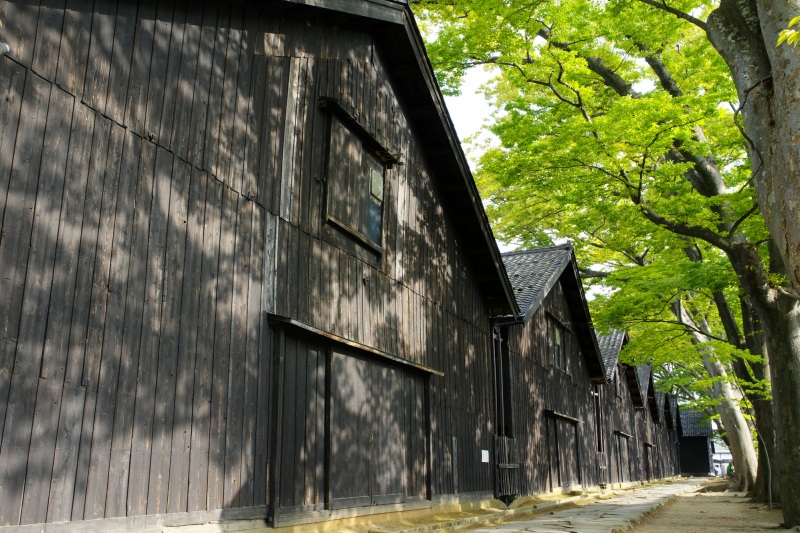
Sankyo Soko Storehouse
Built in 1893, the Sankyo Soko Storehouses continue to function today as rice storehouses. The impressive wisdom of the builders can be seen in such things as the double roof used for insulating heat and the row of Keyaki trees planted behind the storehouses to protect them from the afternoon sun and strong winds. Today the storehouses continue to protect the rice contained within them from heat and moisture using the same traditional methods.
The row of storehouses emanates a nostalgic atmosphere and maintains traces of the years when the area flourished as a port for rice shipments.
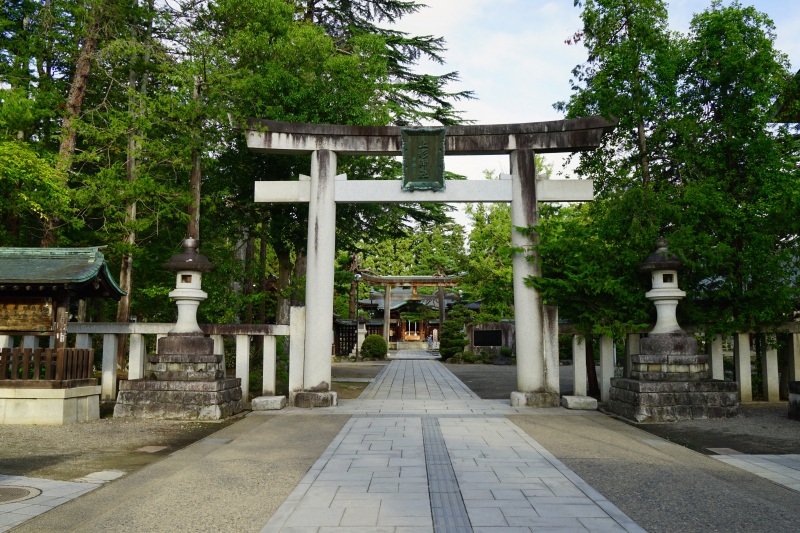
Uesugi Jinja Shrine
Uesugi Jinja Shrine was built on the grounds of the former Yonezawa Castle to enshrine Kenshin Uesugi, one of the most powerful warriors of the civil wars of the 15th and 16th centuries. The shrine is believed to bring good luck, academic success and thriving business thanks to Kenshin’s lingering spiritual energy.
Onsens in Yamagata
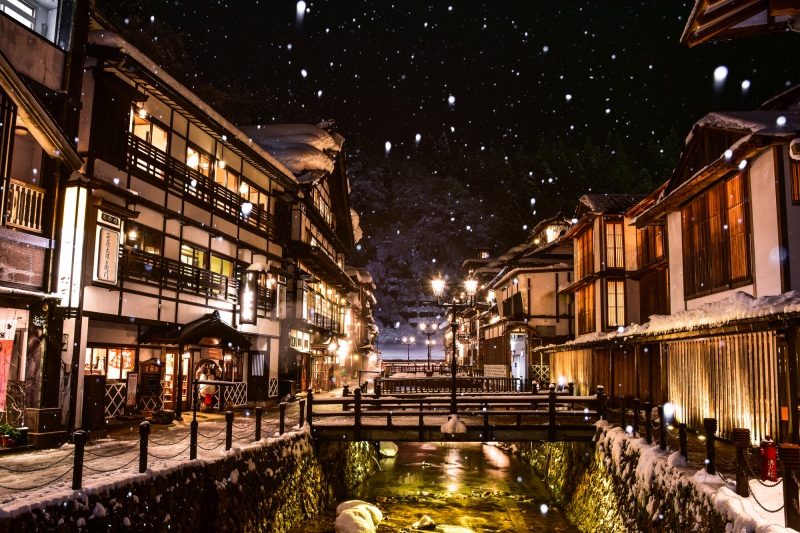
Ginzan Onsen
Travel back in time to classical Japan in Ginzan Onsen! The town is home to wooden hot spring inns lining each side of the Ginzan River and resonates with nostalgic beauty when illuminated at night by gas street lamps. The view reminds visitors of scenes from the famous film “Sprinted Away” by Hayao Miyazaki. Before that the town was used as a location of NHK’s popular TV drama series “Oshin”, a monumental hit of 1983. The night view
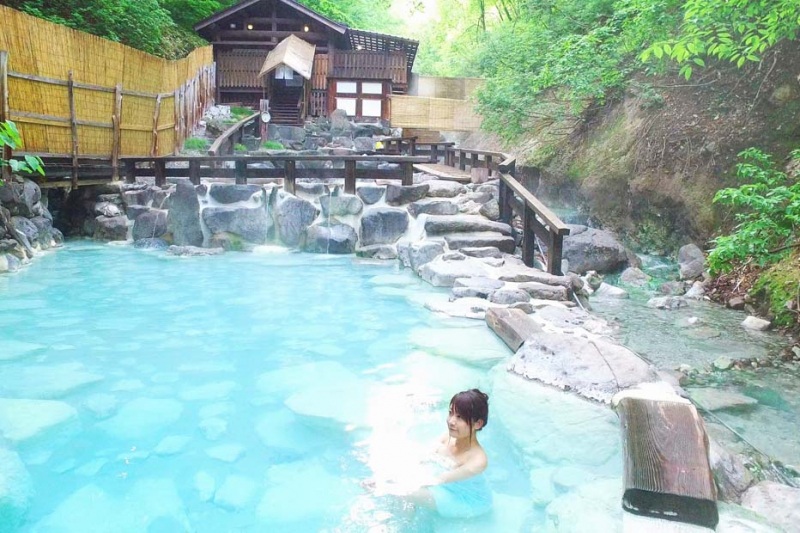
Zao Onsen
Zao Onsen features abundant sulphuric hot spring water with strong acidity. The town’s streets are lined with a number of hot spring inns and hotels amid atmospheric spring steams. The hot springs are known by the nicknames of Hime-no-Yu (princesses’ bath) and “Kodomo-no-Yu” (children’s bath) for their beauty and health benefits. The town offers three public baths, Kami-yu, Shimo-yu and Kawara-yu, each of which is reasonably priced (200 yen each). These three baths are located very close to each other and are suitable for Onsen hopping.
Yamagata’s culinary highlights
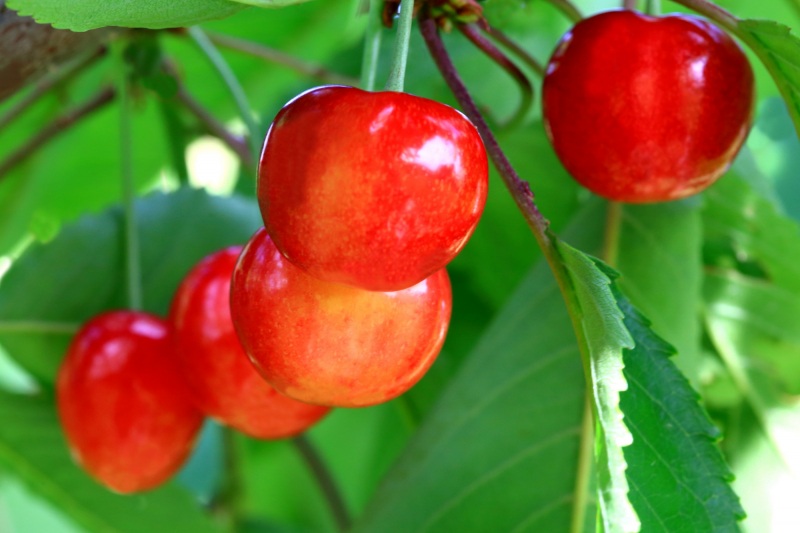
Cherries, watermelons and “La France” pears
Yamagata prefecture is known as the Kingdom of Fruit. With the arrival of early summer, cherry trees are weighed down with their jewel-like, ruby fruits. Yamagata produces about 70 percent of the nation’s cherries and sampling the sweet, juicy cherries from the tree is an absolute delight! The city of Obanazawa is known for Japan’s largest crop of watermelons. The large temperature differences between day and night naturally sweeten locally grown watermelons resulting in a high sugar content. The local “La France” pears are praised as the Queen in this Kingdom of Fruit. The aromatic and juicy fruit are worthy of their position at the top of all Japan’s Western pears.
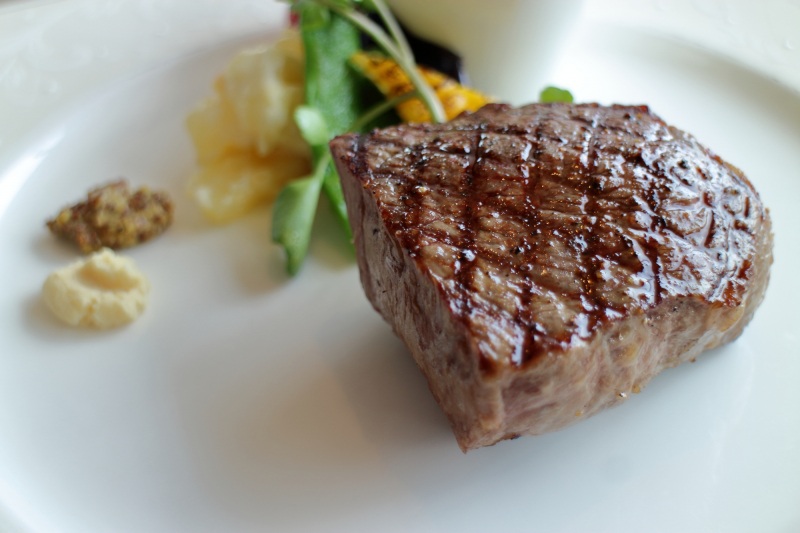
Yonezawa beef
The nationally renowned Yonezawa beef is a breed of cattle raised in the Yonezawa basin. Large temperature differences between the hot and humid summer and harsh cold winter produce fit cattle with perfectly textured, marbled beef. The cuts and slices of Yonezawa beef feature a melt-in-the-mouth texture and a subtly sweet flavour. The restaurants in Yonezawa offer unforgettable Yonezawa beef experiences with a variety of menu options including steak, Sukiyaki and Shabu-Shabu.
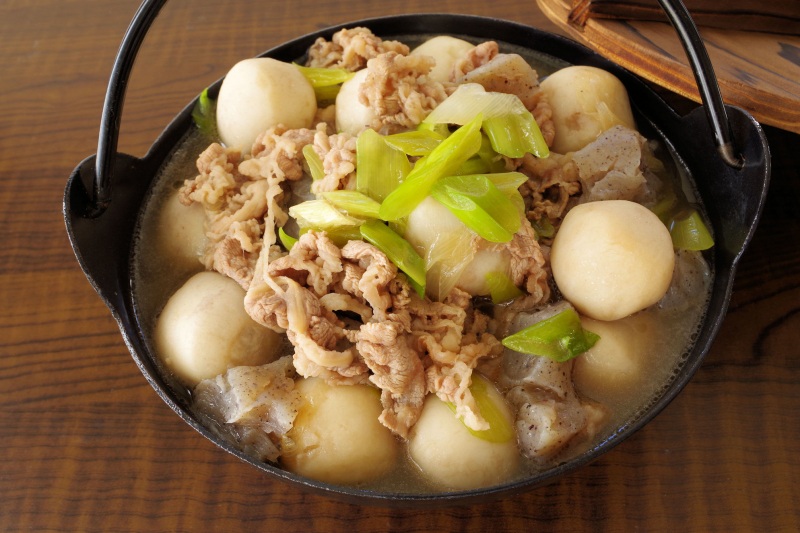
Imoni
Imoni is a traditional Tohoku stew of taro and meat. It is particularly popular in Yamagata each autumn when locals can be found gathering for riverside Imoni parties. The traditional style of Yamagata city is a soy sauce-flavoured Imoni with taro and beef. The Yamagata Imoni Festival is Japan’s biggest Imoni festival and takes place in Yamagata each September. The festival features a massive six-metre cauldron of Imoni big enough to serve 30,000 guests. In addition to the festival, visitors can enjoy Imoni at the city’s local restaurants throughout the year.